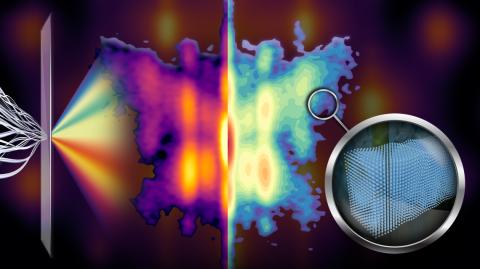Frequently Asked Questions
Q: Does beamtime at CHESS cost?
A: beamtime for academics is free of charge, but is awarded based on scientific merit, feasibility, and appropriateness to the beamline scientific mission. Potential users submit short online proposals which are evaluated by anonymous peer review. Once accepted, a proposal is good for two years and the awardee needs only submit a beamtime request form (BTR) when they want more time.
Q: Can corporations apply for beamtime?
A: Corporate researchers doing non-proprietary research may apply through the same mechanism as academics and, if awarded time, are not charged. Proprietary research must pay for the use of the beamline. Potential corporate users should contact CHESS for detailed on our various corporate programs (provide link)
Q: Can graduate students or postdocs submit beamtime proposals?
Yes. Graduate students and postdocs may be PI on a beamtime proposal.
Q: How do I apply for beam time?
A: First, you write a short online proposal. A HOW-TO video on proposal writing can be viewed here: <link>. Once a proposal have been peer-reviewed and received a score, a beamline scheduling person will contact you to arrange for your first visit. After your first visit, you need to submit a beamtime request (BTR) when you want beamtime. The original proposal is good for two years.
Q: Do beamline scientists need to be co-authors on my papers?
A: It depends. All papers must acknowledge the proper CHESS (NSF and NIH) grant numbers (link here). Routine data collection does not require beamline scientists to be co-authors, but you may wish to thank them in the acknowledgements section of your paper. For specialized or difficult experiments where the beamline scientist is critical to success, or if the beamline scientist does specialized data processing, data interpretation, or contributes text or intellectual content to your paper, you should consider offering them co-authorship, if appropriate. The ultimate decision is up to you as a researcher.
Q: Do you support mail-in service?
A: We do, but only if staff time permits and if your group has previous experience at the beamline, and if the experimental method is automated or routine. We do not have enough staff to run large numbers of mail-in jobs. The best chance of success for any experiment is always to visit in person so you can learn the technique, evaluate incoming data, and make decisions about the best way to proceed.
Q: How much data processing will staff do for me?
A: We will teach you how to do basic data reduction and processing (model-independent methods) if you visit in person. Users are responsible for data processing unless they have made special collaborative arrangements with a staff scientist. For mail-in jobs, we do simple data reduction, Guinier analysis, and molecular weight estimates.
Q: Where can I learn how to process data?
A: CHESS usually offers training workshops of various kinds once a year. Other facilities also offer excellent training workshops (list?). There are also training videos available <link here>
Q: what types of X-ray scattering can I do at (S7A/HP-Bio)?
A: check out this link for a list of different methods <link here>
Q: Can I request more than one type of experiment in a visit? If so, how long does it take to switch experimental setups?
A: Some routine experimental setups can be switched rapidly or even during an experiment by the user. Other types of experimental setups may require a whole day of setup and testing before you can use them. Please always consult your beamline scientist if you need more than one kind of experimental setup to make sure you have enough time for the changeover.
